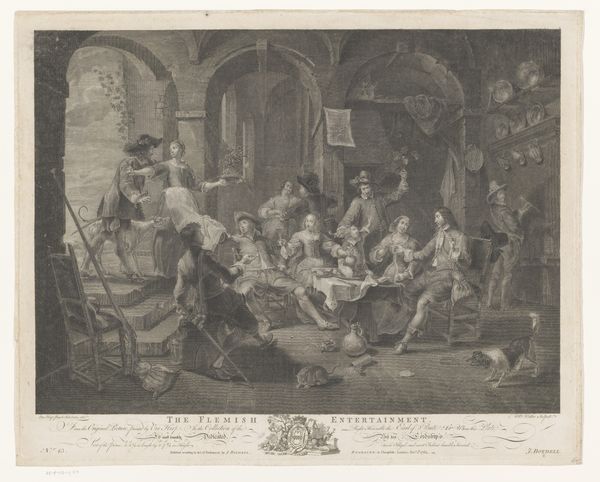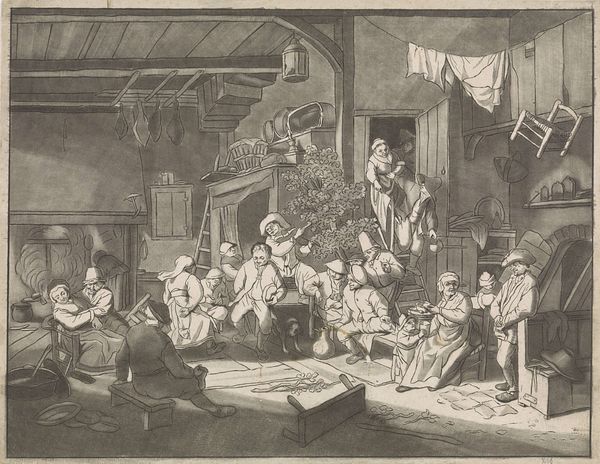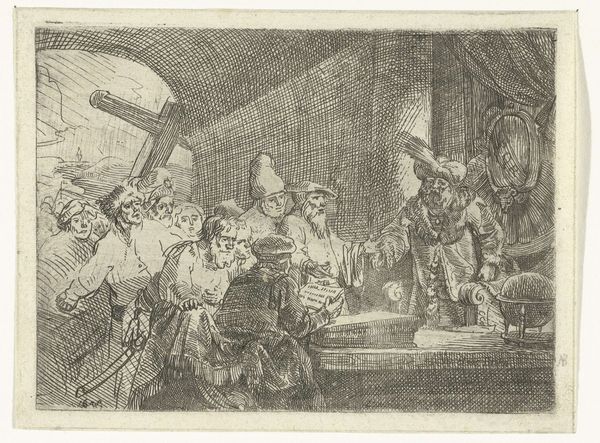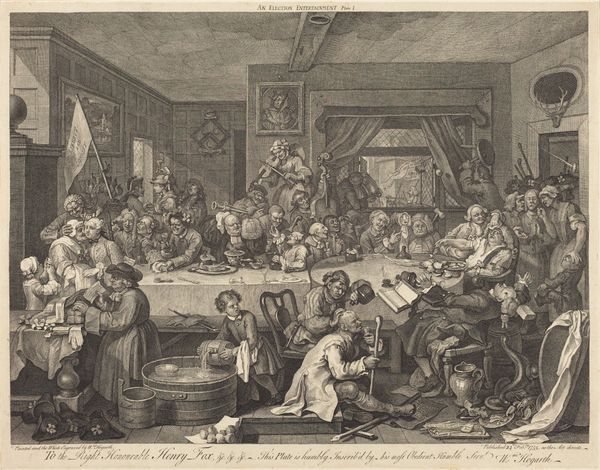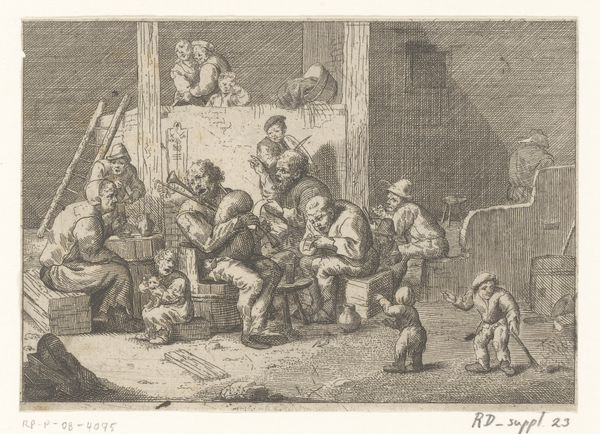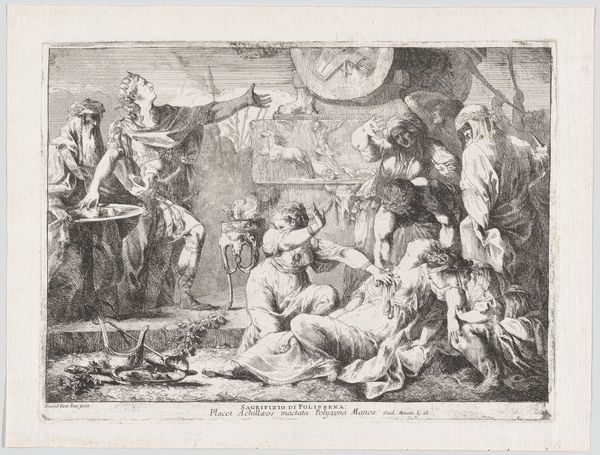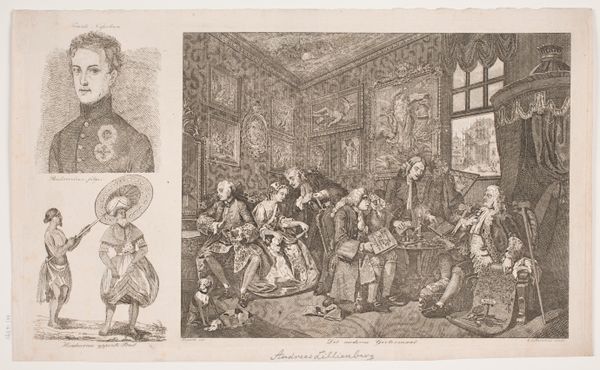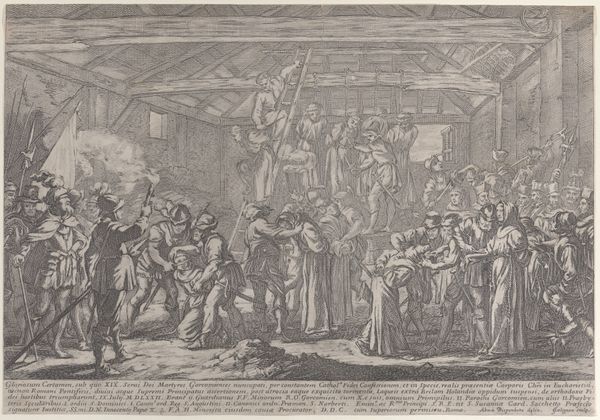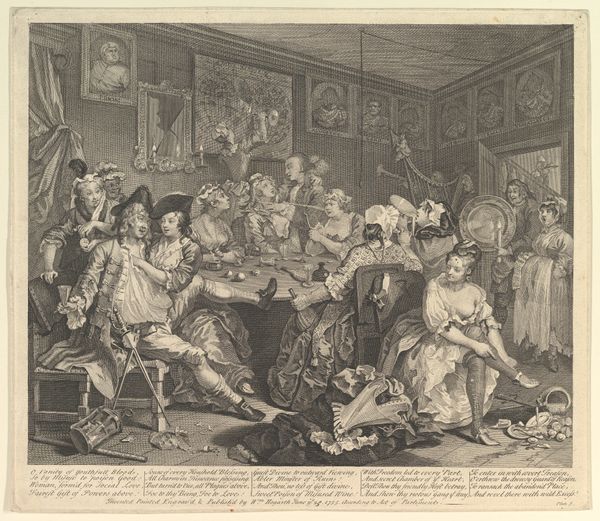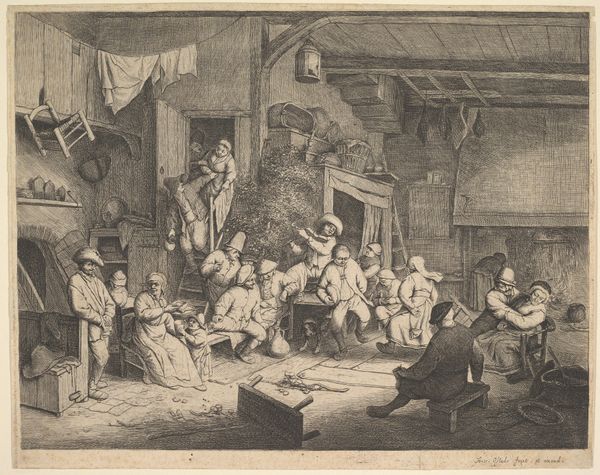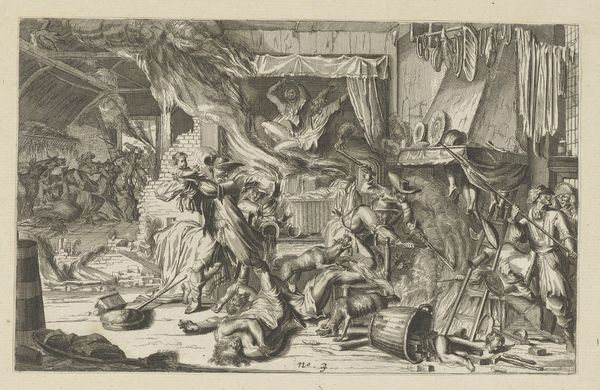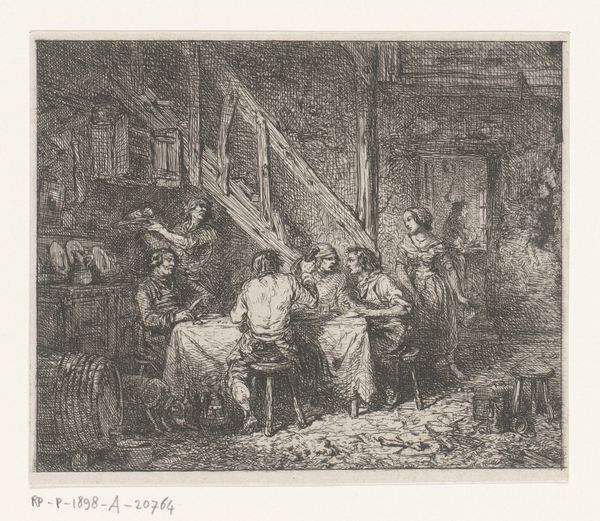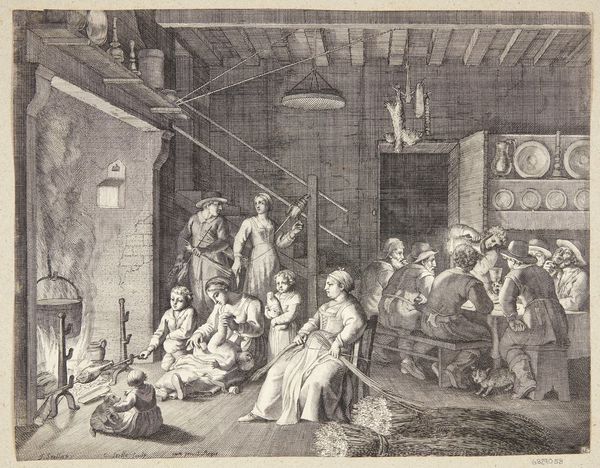
drawing, print, etching, ink, engraving
#
drawing
#
narrative-art
#
baroque
# print
#
etching
#
figuration
#
ink
#
line
#
genre-painting
#
history-painting
#
academic-art
#
engraving
Dimensions: sheet: 17 11/16 x 22 7/16 in. (45 x 57 cm)
Copyright: Public Domain
Editor: So, this is William Hogarth’s "Strolling Actresses Dressing in a Barn," an etching and engraving from 1738. It feels chaotic, almost like a snapshot of organized disorder, and there’s so much going on. What symbolic significance do you see in such a busy composition? Curator: The beauty of Hogarth lies in his ability to pack a narrative punch. Each element resonates with the era’s anxieties and social commentaries. Note how the actresses are adorning themselves with symbols of classical goddesses – Minerva's helmet becomes a chamber pot, Diana's crescent moon is clumsily fashioned. Editor: Oh, I see what you mean. It’s almost mocking the idea of high art and classical ideals? Curator: Precisely! The attire hints at aspirations of grandeur but descends into satire amidst the squalor of their surroundings. Their performance space, the barn, mirrors their lives. Look closely – do you observe anything repeated, or reversed, that feels jarring or poignant? Editor: Well, the cherub in the lower left is holding a crown, and it's tarnished, which mirrors the other misplaced symbols of power and status you described. What did Hogarth want viewers to remember or reconsider about class in that era? Curator: He wanted to expose the distance between perception and reality. These actresses mimic nobility but remain trapped in a cycle of poverty. By appropriating classical imagery, they highlight a cultural memory, a yearning for a grand past. How do you feel this continuity manifests in a modern context? Editor: That's a complex interplay. In today’s media-saturated world, the symbols have evolved, but the underlying desire for status, for recognition, is strikingly similar. The yearning is familiar even today. Curator: Precisely. Through this print, Hogarth captures an enduring part of the human condition – our collective memories and aspirations played out on an individual stage. Editor: I'll never look at this piece the same way again, seeing it now as an eternal mirror!
Comments
No comments
Be the first to comment and join the conversation on the ultimate creative platform.

